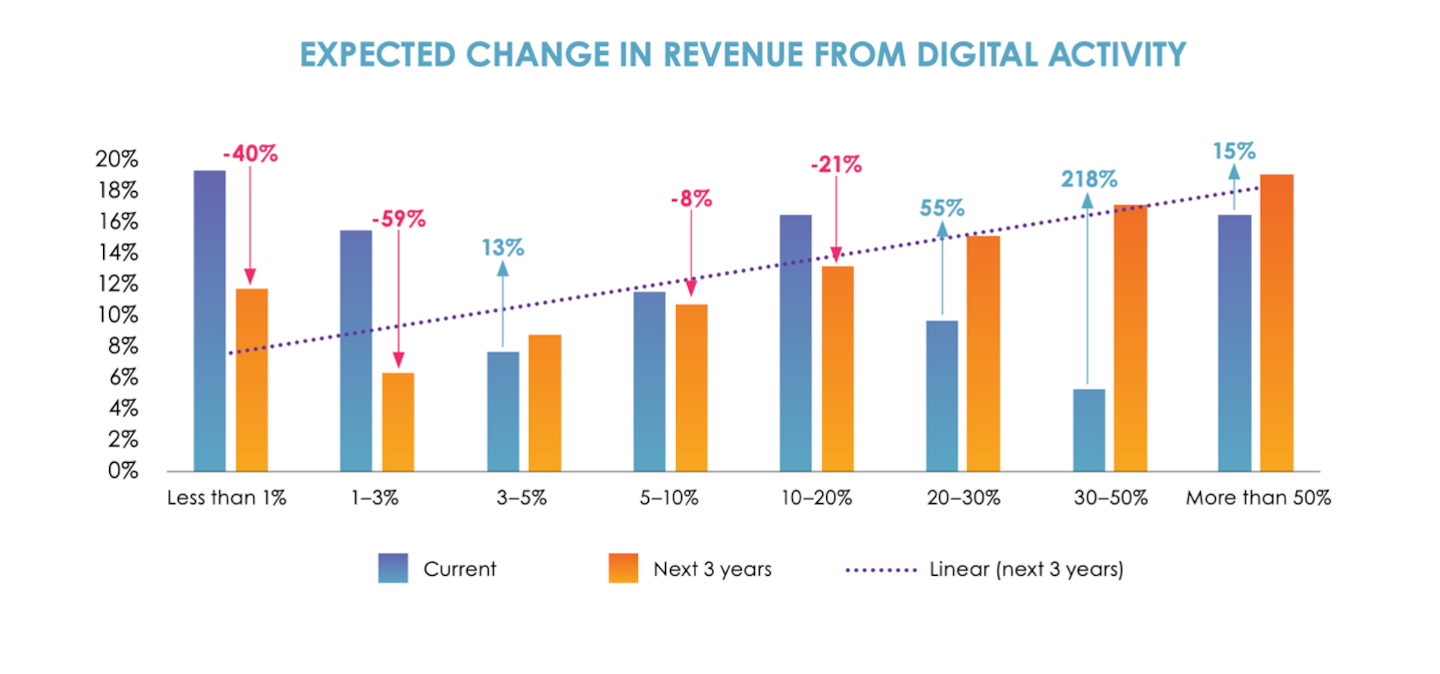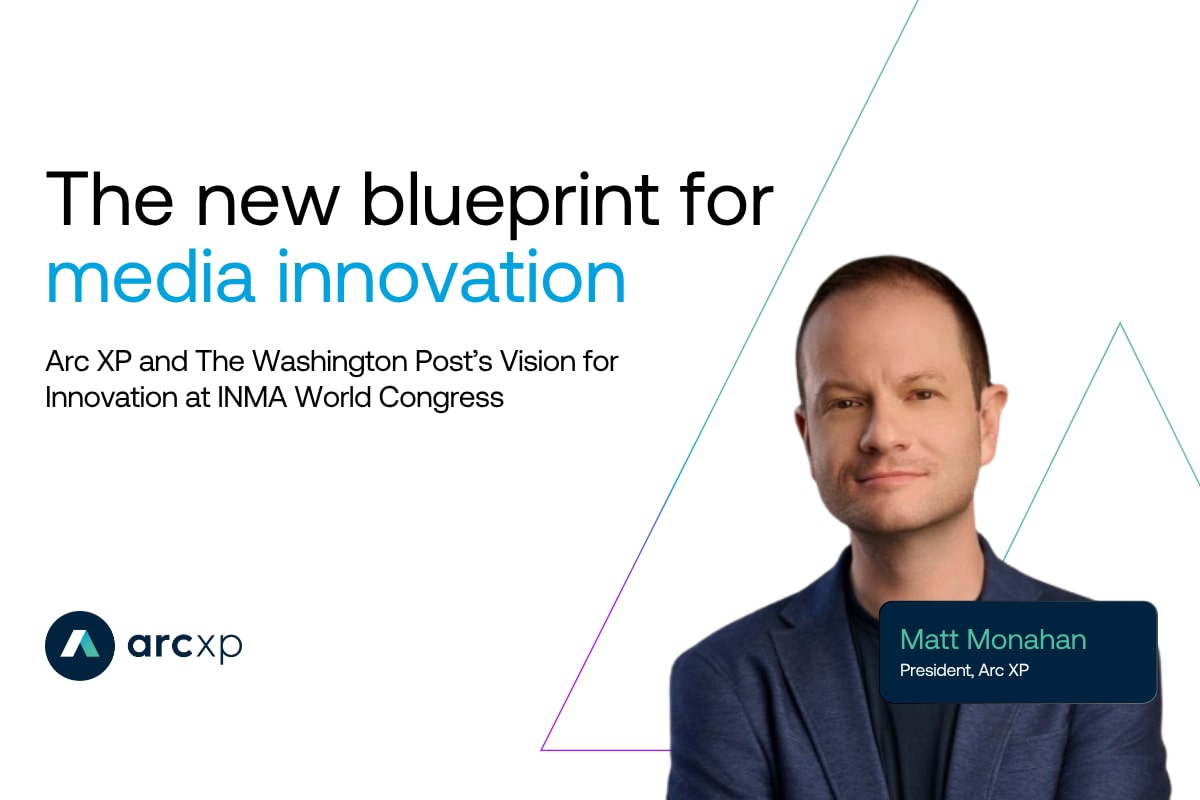How to navigate your digital transformation in a competitive broadcast labor market
Broadcast news organizations are experiencing a recruitment crisis that presents a roadblock to their digital transformation.

In 2019, I attended a National Broadcast Convention in Seattle. As a lively 18-year-old, interested in pursuing a career in broadcast journalism as a reporter, I was eager to learn from the experts. While at the conference, I attended a workshop hosted by a prominent reporter I had looked up to for years. During her presentation, she said that “broadcast journalists are often overworked and underpaid.”
Her comment stuck with me, and I left that workshop with the question not of ‘how do I become a broadcast reporter’ but ‘does being a reporter align with my broader priorities? Is it going to be a constant struggle to make ends meet?’ I wasn’t alone.
In June 2022, I joined Arc XP as a marketing intern to explore a field that values my skillsets and aligns with my priorities. As Arc XP’s digital experience technology powers the digital transformation of broadcast customers across the globe, I’ve had the opportunity to still engage with the broadcast industry, just in a different way. What I learned through the various research I’ve engaged with, is that I am one of many Millennials and members of Gen Z that are hesitant to pursue a career in broadcast.
At large, broadcast news organizations are experiencing a recruitment crisis. For younger generations, working for news media doesn’t have the same appeal it once did. Job postings that once brought in hundreds of eager applicants now receive a trickle if an organization is lucky, and often lower quality candidates leading to a critical shortage of young talent working both in front of and behind the camera.
Driven by changing audience behaviors and expectations, broadcasters are rethinking both their content development processes and how to engage with audiences across devices and communication channels. From content creation and sales to production and engineering, the digitalization of the media industry is changing the way that broadcasters conduct nearly all facets of their business. As with any organizational change, they are working to bring their staff along with them and recruit team members who can help the organization progress towards their digital goals.
A recent global research study from NAB Amplify, and sponsored by Arc XP, set out to understand the state of digital evolution for broadcasters. In the findings, recruiting digitally native talent was identified as the number one challenge among respondents. Broadcasters face tough competition from the allure of the high salaries, progressive work life balance, better working conditions, and intellectually stimulating roles in major tech companies.
It starts with investing in digitally native talent
As audience media consumption behaviors continue to evolve, so do the needs and priorities of the people behind the media organizations themselves. While the news industry offers a challenging and purpose-driven work environment, this doesn’t outweigh the desires of the incoming generation of workers who – and really this carries across all industries – prioritize compensation consistent with market value, flexible work arrangements, and a culture centered around growth. Throughout the study, several initiatives were identified that news media organizations are or should implement to help attract and retain digitally native talent.
Among the study respondents, the majority said ‘people’ are the most important starting point for their digital transformation. At a time when broadcast media organizations are struggling to find the budget to fund their digital initiatives, they are experiencing increasing challenges hiring new and recent graduates. In addition to the rising cost of living, the cost of higher education has increased as well – in-state tuition at public universities, for instance, has risen over 210% in the last 20 years. With the average student taking on nearly $30,000 in student loan debt, it’s no wonder graduates are focusing on industries that can enable them to pay their bills and then some.
The ever-changing digital landscape of the media industry and the need for specialist expertise and employee training is challenging executives to future proof their organization while delivering ROI on existing digital assets, a careful balance between maintaining traditional revenue streams while investing in the technology and skills to keep up with the digital future.
The study findings suggest that investment in digital initiatives, including employee recruitment and training, leads to rapid audience growth and employee retention for broadcasters in the early stages of digital maturity. In the later stages of digital maturity, revenue growth shifts to consumer growth and the engagement and retention of advertisers.

While survey respondents expect their digital revenue to increase, regardless of where they are in their digital journey, success hinges on their willingness for investment, and that includes talent. With ‘talent and skills’ identified as the primary roadblock in the digital journey, to attract and keep the talent that will enable the fulfillment of their digital dreams, broadcast organizations need to provide compensation that is proportional to the value they bring.
Streamline workflow processes to aid in burnout
Along with the pandemic came the re-evaluation of work life priorities. In 2021, over 47 million Americans voluntarily quit their jobs in search of higher wages and job flexibility. This historic quitting spree, known as ‘the great resignation,’ left many industries desperate to fill roles, the broadcast industry included.
While it’s no secret that working in the newsroom is often a stressful environment, the pandemic magnified those pressures resulting in high rates of burnout and anxiety. Former Gray Television anchor, Lesley Van Ness, spoke about the pressures associated with the role. “You have to make a lot of sacrifices,” said Van Ness. “You’re sacrificing hours working weekends, working holidays. There is this constant platform that we have to create content for that is just never-ending. And I think that even creates more stress and pressure on people.” With so many Gen Z and Millennial workers, and really in all generations, valuing flexible work arrangements and work life balance as a top priority, the high pressures associated with working in the newsroom is not a sacrifice younger generations are willing to make.
To retain current talent and attract new employees, identify ways to bring efficiencies to the workplace and streamline workflow processes that will aid in reducing burnout. Consider technology that facilitates collaboration and reduces headache of creating digital content and enables its distribution at a larger scale.
Reduce job hopping
Job hoppers, i.e. workers who spend less than two years in their position are having a significant impact on the broadcast industry. As these individuals leave and shift into tech, and other industries that provide better compensation and benefits, it is not only expensive for an organization to replace them, averaging six to nine months of an employee’s salary, but it also places extra pressure on existing employees, thereby slowing the organization’s digital progress.
Combat job hopping by building robust employee retention programs. Within these programs the manager/employee relationship plays a central role with open communication, consistent recognition and feedback, and clear growth paths. These may seem like common steps, but lack of career path and limited growth opportunities is one of the leading causes of job hopping with over 90% of employees reporting that they would stay in a role longer if the company invested in their career. Investing in your workers’ career goes beyond promotions and pay raises. It includes opportunities to take on challenging projects and expand their skill sets that allow them to grow within their current role.
“Once you get somebody hired, you don’t want to have to do it again in a year or two years, you want to be able to hold on to them,” says newsroom coach Kevin Benz. “Culture has everything to do with that: creating a culture in your newsroom that is supportive, a culture of growth and development, a culture where people feel like they’re listened to, where they have a say in what’s going on, where they have some ownership in the work that they’re doing.”
Support employees through change
As broadcast organizations, big and small, continue towards digital maturity, it is important to recognize that for many employees, the changes needed to support a digital transformation come with new tools and ways to do their jobs, which can lead to anxiety and weariness. Support your teams by creating a culture, driven by leadership on down, that clearly outlines the changes that will be taking place and what training supports, etc. will be in place to help ensure that they will be prepared and not left behind through the progression.
While internal training and reskilling is an essential catalyst for digital transformation, it is not sufficient on its own. The study findings illustrate that organizations need a steady pool of new, digitally native talent to facilitate innovation. As a solution to the recruitment challenge, a few organizations implemented graduate training programs that nurtured local talent from within their community. Within a few years, they saw a tangible impact on their organization’s digital skills which translated into innovation and revenue diversification.
At the end of the day, the journey towards digital maturity is not an easy trek but having the right people on your team will help lay the foundation of success for years to come.
For more information on understanding your organization’s evolution to digital maturity, download the full NAB Amplify report today.
Recent resources





